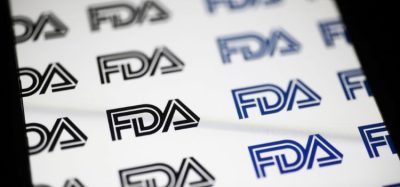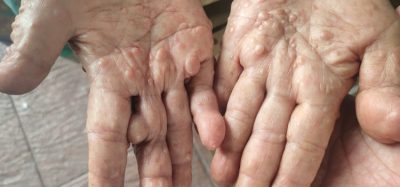Taking clinical trials into the future
Q1: Please outline the general process of Phase I clinical trials.
Burnand: Phase I is the screening for safety process and it’s the first time that a product is given to a human being. The aim at this stage is to demonstrate that the product isn’t dangerous. The data will alsol be used to determine the dosage for the Phase II stage and we estimate that between 20 – 100 healthy volunteers participate (and in some cases they are not healthy volunteers, where there will be some known side effects, but generally they are healthy).
Q1: Please outline the general process of Phase I clinical trials.Burnand: Phase I is the screening for safety process and it’s the first time that a product is given to a human being. The aim at this stage is to demonstrate that the product isn’t dangerous. The data will alsol be used to determine the dosage for the Phase II stage and we estimate that between 20 – 100 healthy volunteers participate (and in some cases they are not healthy volunteers, where there will be some known side effects, but generally they are healthy).
Participants
Name: Aisling Burnand
Affiliation: BioIndustry Association
Bio: Aisling Burnand is Chief Executive of the BioIndustry Association (BIA), the UK trade association for healthcare bioscience companies.
Name: Lawrence K. Oliver, PhD
Affiliation: Mayo Clinical Trial Services
Bio: Dr Oliver has been with Mayo Clinic in Rochester, Minnesota since 1997. He is currently the Scientific Director of Mayo Clinical Trial Services, the Director of the Metals Laboratory in the Department of Laboratory Medicine and Pathology, and the Director of the Center for Biomarker Research.
Name: Timothy G K Mant, B.Sc, MBBS, FRCP, FFPM
Affiliation: Quintiles Limited
Bio: Honorary Senior Lecturer in Clinical Pharmacology, Department of Clinical Pharmacology, Division of Pharmacological Sciences and Toxicology – The Guy’s, King’s College and St Thomas’ Hospitals Medical & Dental School.
Q1: Please outline the general process of Phase I clinical trials.
Burnand: Phase I is the screening for safety process and it’s the first time that a product is given to a human being. The aim at this stage is to demonstrate that the product isn’t dangerous. The data will alsol be used to determine the dosage for the Phase II stage and we estimate that between 20 – 100 healthy volunteers participate (and in some cases they are not healthy volunteers, where there will be some known side effects, but generally they are healthy).
Oliver: Secondary, tertiary, PK and research endpoints are being lumped into phase I, and those endpoints can reduce effectiveness of the safety evaluation. Common flaws are: 1) the lab is not consulted early enough to evaluate the analytical performance in relation to the drug activity; 2) rush to the second trial, so potential safety biomarker testing is not evaluated or possibly not even completed. 3) the design is not reconsidered for validity after the ‘add-ons’; 4) [In the US, at least] the 30 day wait to start a trial after submitting the paperwork is a passive process – no response means go ahead. That should be changed to an active interaction.
Mant: Early clinical studies in healthy volunteers and patients play a crucial role in the development of more effective and safe medicines. These studies provide initial data on safety and tolerability, they examine whether the pharmacological effects seen in experimental animals are expressed in man; they provide crucial dose response data and the pharmacokinetic and pharmacodynamic investigations provide necessary information to support selection of dose regimens to be used in later trials.
Q2: Is the process usually carried out by pharma companies, or outsourced to specialised clinical trials companies?
Burnand: Small and medium sized bioscience companies outsource trials to CROs – simply because they don’t have the resources themselves. Larger companies may have these capabilities in-house.
Q3: Approximately what percentage of drugs that enter ‘first in human’ trials make it onto the market?
Burnand: Industry averages suggest that approximately five per cent make it onto the market.
Oliver: A common estimate is 20%.
Mant: It is estimated that of those compounds that do enter Phase I clinical development, fewer than 8% will go on successfully to be licensed and marketed.
Q4: Do you consider that improvements could be made to these early-stage trials that would prevent failures at a later stage (and hence lessen the financial impact to pharma companies)? If so, what improvements could be made?
Burnand: Drug research techniques are constantly evolving in this highly innovative sector. New pre-clinical models are being developed which could become powerful tools for the future, for example more refined animal models and in-silico modelling. Certainly the more sophisticated and accurate the early stage processes are, the less failures there would be further down the line.
Oliver: Improvements must be made. We are relying on extensive biochemical evaluation of the subject/patient in clinical trials to assess drug activity, drug safety and mechanism of action. Decisions from that data guide dose selection and monitoring procedures for future trials. The NIBSC work documented that current analytical science did not and perhaps can not accurately predict the in vivo interaction between a ligand and its receptor. The science required to validate those analyses and to provide interpretive guidance is still lacking.
The biological and clinical validation of testing needs to improve. We must prove that what we are measuring matches the form of the analyte in the biological fluid, and that how we are measuring it is consistent with its biological function. The NIBSC work demonstrated unequivocally that laboratory testing did not mimic the physiology.
Mant: Yes. A new approach is required to produce better drug products, reduce development time and costs, improve efficiency and reduce the late-phase attrition rate, thereby maximising the return on investment in drug discovery and enabling patients to benefit from more effective therapies sooner.
One such approach is to reduce the sequential nature of early clinical development. This can be achieved by evaluating the required optimal product profile, identifying and applying essential criteria for ‘Go/No-go’ decisions that focus on drug characteristics critical for successful later phase development.
Early clinical studies in healthy volunteers and patients play a crucial role in the development of later phase clinical trials. These studies provide initial data on safety and tolerability, they examine whether the pharmacological effects seen in experimental animals are expressed in man; they can provide salient dose response data and the pharmacokinetic and pharmacodynamic investigations provide necessary information to support selection of dose regimens to be used in later trials (6).
An integrated early clinical development plan utilises innovative flexible study designs, concentrating on the generation of critical data for ‘Go/No-go’ decision making and enables efficiencies in time and cost. Using the integrated approach the preliminary investigations of safety, tolerability, pharmacokinetics and pharmacodynamics (including proof of concept) following single and multiple doses of a new compound are performed in one integrated protocol.
There are a number of advantages to the integrated protocol in early clinical development. Studies are performed in small numbers of subjects under controlled experimental conditions employing the rigorous scientific and operational disciplines of traditional Phase 1. This reduces the variability of the data and the introduction of bias in the interpretation of the data. The studies are usually double-blind, randomized and placebo-controlled and divided into a number of distinct parts. Where appropriate the use of an active comparator may be included. By focusing on obtaining the critical data required for further development unnecessary investigations are also avoided. These studies also permit investigation in the target population much earlier, and enable dose selection for Phase IIb efficacy studies to be made more rationally using pharmacodynamic / proof-of-concept data. There is a smooth transition from one part of the study to the next, thus improving scientific and operational continuity; unnecessary delays are eliminated, the time to study completion is shortened and costs are reduced. These study designs are accepted in the UK by the regulatory authority (MHRA) and Type 1 recognised Research Ethics Committees.
Q5: How are you as a Company evolving to improve the quality of information obtained from early-stage results?
Oliver: At Mayo Clinical Trial Services, our focus is to ensure that the performance of our assays matches the needs of the drug and the protocol. We must understand the form of the analyte in the biological fluid, know how our detection mechanism senses that form and relates to the calibration, understand how the drug works and the expected changes in the analyte and that the procedure is sensitive and specific enough to detect and quantitate those changes. We work through strategic alliances whenever possible, so we can have sufficient time to develop or modify assays appropriately, and to conduct the biological validation studies needed for the background information to interpret the data, in all phases of development.
Mant: Quintiles has always been committed to producing data of the highest quality. As processes, such as the use of the integrated protocol approach, evolve quality of data remains a paramount objective.
Q6: How involved are you with the end users (biotech/pharma companies) in reaching the results that are gained in testing?
Oliver: When we can work strategically with a company, we (jointly) can achieve the desired biological validation and understanding for optimum use of laboratory testing. Early and thorough sharing of expertise surrounding analytical expectations and capabilities is necessary. At times we must decline to work with a company if we cannot get access to information necessary to evaluate the analytical performance required.
Mant: As a service provider we always work extremely closely with our customers to ensure that the studies we conduct on their behalf meet their objectives. We use our experience and expertise, particularly in first-in-man studies, not only to deliver studies of the highest quality on time but we also to provide advice on alternative approaches and study designs that may help optimise the development of their molecules.
Q7: Why was the ESG (Expert Scientific Group) formed?
Burnand: The ESG was set up after the TGN1412 trial to look at the lessons learned from the trial and make recommendations to increase the safety of similar new medicines.
Q8: What were the most significant recommendations made in the Duff report?
Burnand: There are a variety, but the ones we would highlight are: Recommendation 5; that there should be more communication between developers and the regulator at an earlier stage, before an application is filed – especially for the higher risk agents. Also significant is the recommendation that ways to increase this communication should be considered. Another significant recommendation was number 7: That an expert advisory group of the Commission on Human Medicine could undertake this role, with a core membership of appropriate experts and the ability to bring in additional expertise as needed.
The next, in order of the report, is one that we proposed in our submission to the Duff committee, that there should be a broader approach to dose calculation beyond reliance on a system known as ‘NOAEL’ (no observable adverse effect level) to also include an additional approach that we termed ‘MABEL’ (miminal anticipated biological effect level). This is something that we emphasised in our report and though it is not entirely new (it is practiced within the industry) we were pleased to see it in the Duff report.
With relationship to the clinical environment of first-in-man studies, one of the issues that was highlighted was the need for the development of the national accreditation system for principal investigators for first-in-man trials. We consider this to be significant. Also, in the environment in which the trials are conducted – for high risk medicines particularly – it is important to ensure that you have staff with the appropriate training with access to facilities for acute emergencies.
Q9: How will the implementation of these recommendations prevent the occurrence of incidents such as the TGN1412 trials?
Burnand: If we take the example of looking at the dose calculation that I’ve referred to: Risk assessment should really take into account, both what the desired action of the new medicine is, as well as the potential toxicity. That is especially important for novel therapeutics, designed to stimulate the immune system, where you should be setting the initial starting dose at a level that will have minimal (or no) biological effect.
Q10: Are the recommendations in the Duff report just for safety or will they refine the clinical trials process in general?
Burnand: Safety is what first-in-man trials are all about, but several of the recommendations refer to the regulatory review process, and the MHRA has brought in a new system as a result, so we would say both.
Q11: How do you see the outcome of the Duff Report affecting the industry as a whole?
Oliver: First dose calculations using “MABEL” approach is helpful, but we must also question and validate the data used to apply the MABEL concepts. We must verify assumptions about analytical performance and validation criteria before we draw conclusions that can affect the safety and even the life of volunteers.
The pre-trial communication loop must be expanded beyond developer and regulator. The complex issues that are being addressed with investigational new drugs, coupled with the increased expectations of the health care public (providers and patients) of performance and objectivity in administration of the drugs, require that a broad spectrum of people are now the stakeholders in this process. An Expert Advisory Group is a major positive new step, but don’t limit it to one such group.
The collective knowledge about toxicity from failed drugs absolutely must be made available for use in evaluating new applications. To fail to do so is to sacrifice human safety for business purposes. Interests of proprietary knowledge and intellectual property must be reconciled by lawyers and legislators. As an industry, we can no longer turn our eyes away from the human cost of protecting intellectual property using existing standards and laws. It is just not tolerable.
The other recommendations are of considerable value but are things that any rational, objective scientist should be doing routinely! That the Duff Report had to include them is testimony to shortcomings in our industry practice. That we must follow them is self-evident. I expect our regulators to be part of the process and ensure that we practice those standards in every case and to call us on it when we do not.
There are some recommendations the Duff Report did not make, but are valuable:
- Prior to administering an experimental med to a person, healthy or patient, devise and perform ex vivo tests using blood/serum/plasma/cells, even tissue, from that same patient to check reactivity. We need much analytical development and validation (like NIBSC) to achieve this, but that will reduce the safety risk for each patient.
- Consider how the prescribing physician is going to assess if the drug is working in the patient. The biomarker tests used in the trials may aid the physician in that determination, so how should that testing be designed, what biological validation is needed, and what clinical data is required to interpret the test on a per-patient basis. The end goal is to treat the patient: start with it.
Learn from our failures. Publish the results of failed trials, no matter the reason. We must increase ‘transparency’ of our profession. Patients and health care professionals alike view industry-sponsored clinical research as cloaked in secrecy, performed for self-serving purposes, and compromising objective patient care because of lack of knowledge about the meds that are approved. We cannot continue masking, suppressing, or delaying publication of scientific information.
Mant: Quintiles are fully supportive of the guidance included in the recently published report by Prof Gordon Duff. Indeed Quintiles has historically always sought scientific advice from independent experts before trials of substances considered of higher risk were conducted within its Phase I facilities and have always ensured that not only was there adequate medical back up available in all of its units but also actively provided specialist training for both its own staff and external academics. Quintiles also fully endorse the need for transparency and access to all data to facilitate review on the adverse event profile of all drug classes under development. Quintiles believes that seeking expert advice early in the planning process should ensure that delays in initiation of Phase I studies can be minimised while volunteer safety is maximised.
Q12: The Duff report states that ‘Biological molecules with novel mechanisms of action’ constitute a category of medicines with a higher potential for risk of harm to volunteers during the first human exposures. What is the reason for this?
BIA: It is precicely because they have novel mechanisms of action. These biopharmaceutical molecules are sometimes targeting pathways in the body for the first time, and for that reason they represent a higher risk than a candidate that is targeting a known pathway. This is why we have advocated the use of a specific dose setting calculation (MABEL) for these types of molecule.
Q13: How have the recommendations in the Duff report attempted to overcome this higher risk?
Burnand: The Duff report has effectively highlighted precautions to influence the risk management process. They are reinforcing what are (in many cases) widely accepted best practice. Publishing them has had an obvious impact on the regulatory process which should mitigate the chances of something similar happening again.
Q14: How have biotech companies handled the phase I clinical trials process prior to the Duff report, and what (if any) changes will be made in the future?
Burnand: The sector takes safety matters very seriously which is why we brought together industry best practice and made recommendations to Professor Duff’s review. The UK has an excellent track record in conducting first in man studies, however we are concerned that this experience will be eroded. We have anecdotal evidence that the UK has become less attractive for conducting first-in-man studies – and that is obviously a major concern. The main issue has really been the uncertainty surrounding the approval process for trials and the timeline for getting an answer from the MHRA in respect of applications involving biological products, particularly monoclonal antibodies or those affecting the immune system. We’re now at the stage where the MHRA has brought in this new process, but there are still some uncertainties surrounding the changes and the timeline. What the BIA is doing now is clarifying this process and also the involvement of this additional group at the Commission of Human Medicines in the regulatory review process. At the same time, there is also European guidance coming, which should help to harmonise the process across Europe – addressing the safety issue.









